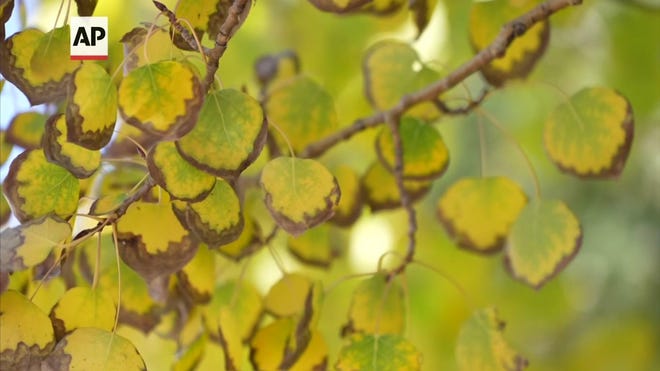
Do you feel like you're crunching on acorns every time you step outside? In Ohio, that could be true.
That's thanks to a slightly above average production of acorns from white oaks.
In some places, it's a mast year for acorns, meaning oak trees are overproducing nuts. These mast years can be random, happening as often as once every year or two, and depends on the severity of the previous winter.
In Michigan, one resident said two "epic oaks" outside her house started dropping acorns in bunches this year after not producing any for years. In Connecticut, parts of the state are seeing a sparse output while others see a lot.
Related:Are you seeing more acorns falling? You could be in the middle of a 'mast year'
Why does this happen? Mild winters can mean more acorns, as white and red oak trees are able to produce more in the spring, while harsh winters or a springtime freeze can lead to little-to-no acorn production.
The Ohio Department of Natural Resources Division of Wildlife annually surveys oak trees in 38 wildlife areas around the state for acorn abundance. This year, the survey results found that an average of 40% of white oaks and 49% of red oaks bore fruit. This means that white oak production is slightly above average, while red oak production is slightly below average.
More:Old Farmer's Almanac predicts cold, snowy winter in Ohio, Kentucky, Indiana
More:When will Greater Cincinnati see peak fall foliage? What prediction tools say
This is the 17th year for the survey, where Division of Wildlife employees scan canopies of selected oak tree wildlife areas and determine the relative size of the acorn crop as well as the percentage that produces acorns.
From 2020 to 2021, the proportion of white oaks bearing acorns increased by 13%, while red oak proportions decreased by 20%. Long term, the average white oak acorn production is 37%, and red oak acorn production is 55%.

In Ohio, more than 90 forest wildlife species depend on acorns for survival, including deer, squirrels, wild turkeys, woodpeckers, blue jays, raccoons and foxes, Division of Wildlife Chief Kendra Wecker said in a release.
Acorn abundance has been linked to body condition, winter survival and reproductive success for many forest wildlife species, and a year with low acorn abundance can cause wildlife to move around in search of more food, according to the ODNR.
Stink bugs are everywhere:How to keep them out of your home and get rid of them
'It's not imaginary':Yellow jackets, wasps and hornets are out in force. Here's why
Source link







